MARIANI’S
Virtual
Gourmet
June 19, 2022
NEWSLETTER
ARCHIVE
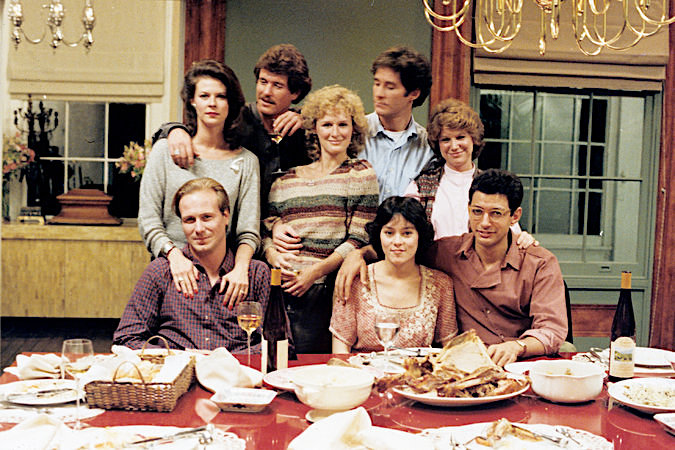
JoBeth Williams, Tom Berenger, Glenn Close, Kevin Kline, William Hurt, Meg Tilly and Jeff Goldblum in The Big Chill (1983)
❖❖❖
IN THIS ISSUE
JAMES BOND'S TASTES:
DR NO
By John Mariani
NEW YORK CORNER
THE STANDARD GRILL
By John Mariani
ANOTHER VERMEER
CHAPTER 24
By John Mariani
NOTES FROM THE WINE CELLAR
WEST COAST WINES: STILL BIG
AND BOLD AFTER ALL THESE YEARS
By John Mariani
❖❖❖
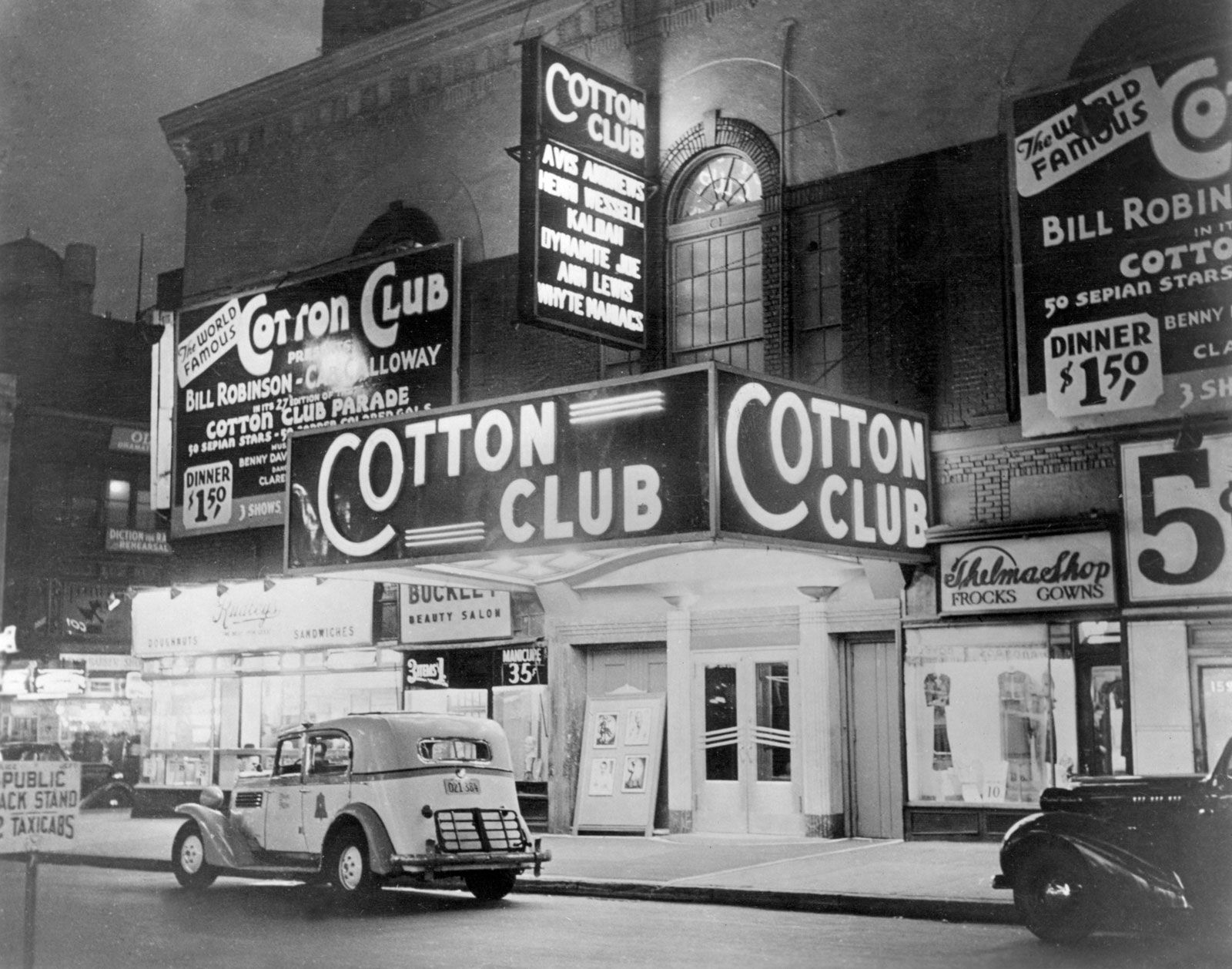 Horton
about the Harlem Renaissance. Go
to: WVOX.com.
The episode will also be archived at: almostgolden.
Horton
about the Harlem Renaissance. Go
to: WVOX.com.
The episode will also be archived at: almostgolden.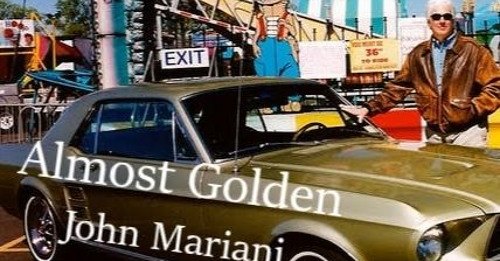
❖❖❖
JAMES
BOND'S TASTES
DR. NO
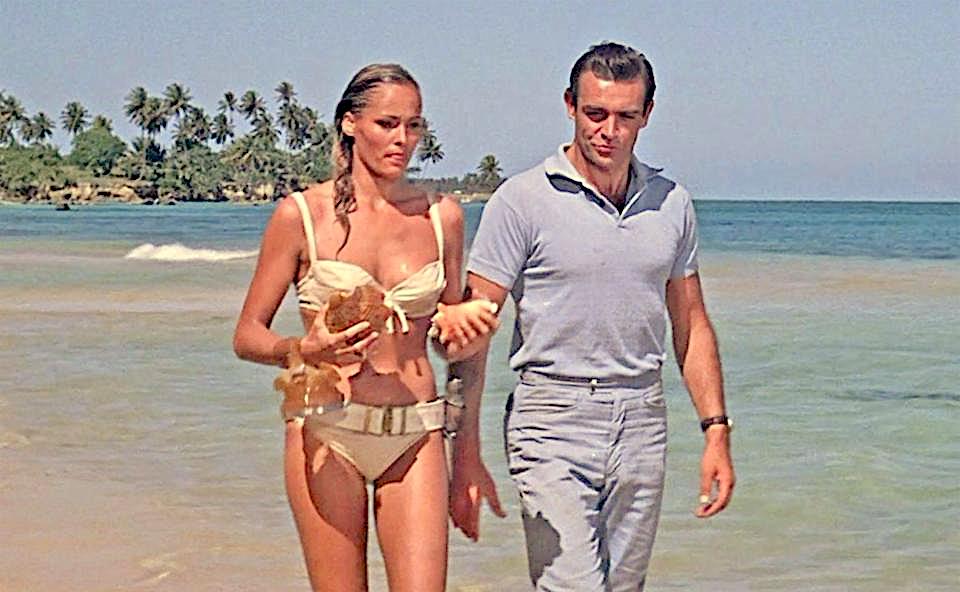
By John Mariani
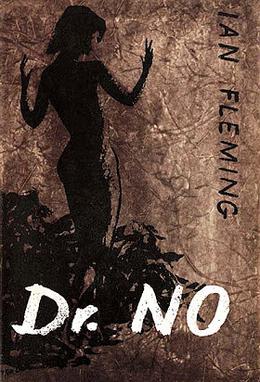 Dr.
No was the very
first 007 movie (1962), modestly budgeted and
introducing Sean Connery as James Bond, based on
the sixth novel (1958) in Ian Fleming’s series,
despite his having (seemingly) killed off Bond in
the previous volume, From Russia
with Love. (Apparently Bond recovered from
Dr.
No was the very
first 007 movie (1962), modestly budgeted and
introducing Sean Connery as James Bond, based on
the sixth novel (1958) in Ian Fleming’s series,
despite his having (seemingly) killed off Bond in
the previous volume, From Russia
with Love. (Apparently Bond recovered from
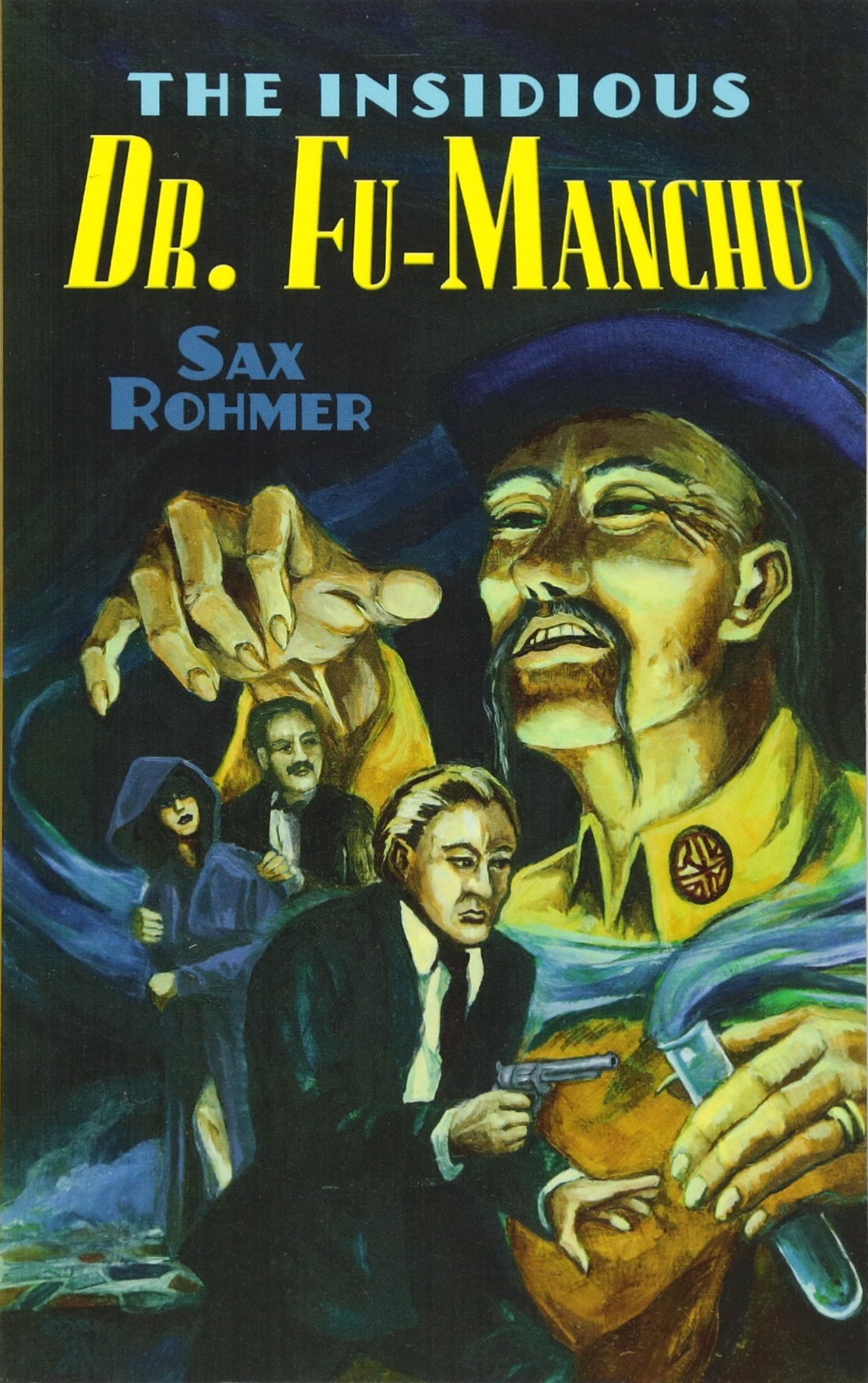 fugu poisoning.)
fugu poisoning.)Jamaica, where most of the book is set, was Fleming’s home, named Goldeneye (below), later the title of a Bond movie with Pierce Brosnan, where he wrote most of his novels and stories and which reggae singer Bob Marley later owned it for a spell.
 The novel’s plot
involves Bond on a mission to Jamaica to investigate
an agent’s assassination and a mysterious Dr. Julius
No, who lives on Crab Key. In his hotel room 007
escapes an attempt to kill him with a tarantula in
his bed. A local guide named Quarrel takes him to
Crab Key, where he meets shell collector Honeychile Ryder, and they are captured by
No's men after Quarrel is burned to death by a
mechanical flame-throwing “dragon.” At his lair,
No (who had his hands cut off by a Chinese tong)
tells Bond he is behind the jamming of American
missile tests on Cape Canaveral. Bond escapes
through an air duct, then battles with a
captive giant squid and rescues Ryder (who
had been tied down to be nibbled away by crabs).
Bond kills No and buries him in a guano-loading
machine. The couple sail back to Jamaica.
The novel’s plot
involves Bond on a mission to Jamaica to investigate
an agent’s assassination and a mysterious Dr. Julius
No, who lives on Crab Key. In his hotel room 007
escapes an attempt to kill him with a tarantula in
his bed. A local guide named Quarrel takes him to
Crab Key, where he meets shell collector Honeychile Ryder, and they are captured by
No's men after Quarrel is burned to death by a
mechanical flame-throwing “dragon.” At his lair,
No (who had his hands cut off by a Chinese tong)
tells Bond he is behind the jamming of American
missile tests on Cape Canaveral. Bond escapes
through an air duct, then battles with a
captive giant squid and rescues Ryder (who
had been tied down to be nibbled away by crabs).
Bond kills No and buries him in a guano-loading
machine. The couple sail back to Jamaica.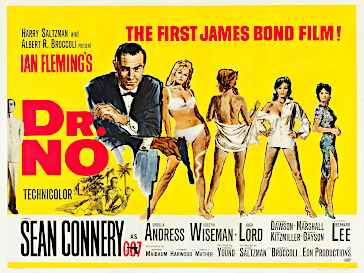 The movie begins
at Jamaica’s Queens Club, where an MI6 agent has
drinks before being murdered. When Bond arrives, he
checks into the Myrtle Beach hotel (right),
refreshes himself with a gin and tonic, and later,
over lunch, enjoys a steak and another gin and
tonic. At his hotel he receives a fruit gift basket,
but finds it has been poisoned, with “objects
containing enough cyanide to kill a horse.”
The movie begins
at Jamaica’s Queens Club, where an MI6 agent has
drinks before being murdered. When Bond arrives, he
checks into the Myrtle Beach hotel (right),
refreshes himself with a gin and tonic, and later,
over lunch, enjoys a steak and another gin and
tonic. At his hotel he receives a fruit gift basket,
but finds it has been poisoned, with “objects
containing enough cyanide to kill a horse.”
As in the book, he meets Honeychile on the beach and is captured by Dr. No’s henchmen and brought to his mini-city at Crab Key, where Bond is allowed to order anything he wishes to eat and drink. He has a lavish English breakfast of eggs on toast, bacon, grilled kidney and sausage, bread, marmalade and honey and strawberry preserves with chilled pineapple juice and Jamaican coffee.
 Honeychile
Ryder opts for a Coca-Cola, and Bond makes his first
reference to wanting his already well-known vodka
Martini “shaken, not stirred,” and “medium dry” with
a slice of lemon, preferably made with “Russian or
Polish vodka.” At the time that might have been
difficult to obtain. Bond certainly could not have
expected Stolichnaya, because it wasn’t exported
until 1974 in a deal with Pepsico to get their soda
into Russia.
Honeychile
Ryder opts for a Coca-Cola, and Bond makes his first
reference to wanting his already well-known vodka
Martini “shaken, not stirred,” and “medium dry” with
a slice of lemon, preferably made with “Russian or
Polish vodka.” At the time that might have been
difficult to obtain. Bond certainly could not have
expected Stolichnaya, because it wasn’t exported
until 1974 in a deal with Pepsico to get their soda
into Russia. 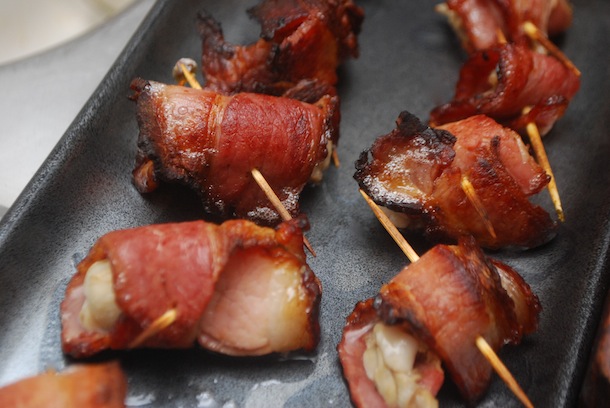 (In another novel Bond recalled the vodka he
drank in Russia during World War II was so like
diesel fuel that the Russians put black pepper in it
to kill the flavor.)
(In another novel Bond recalled the vodka he
drank in Russia during World War II was so like
diesel fuel that the Russians put black pepper in it
to kill the flavor.) Later on, in an underwater room where No has his facilities, Bond finds a menu that he notes might have been from London’s highly regarded Savoy Grill or New York’s ‘21’ Club. Bond orders a double portion of beluga caviar, grilled lamb cutlets and angels on horseback (oysters wrapped in bacon, right) and a Champagne sorbet; for Honeychile he orders roast stuffed chicken à l’anglaise and a hot fudge sundae.
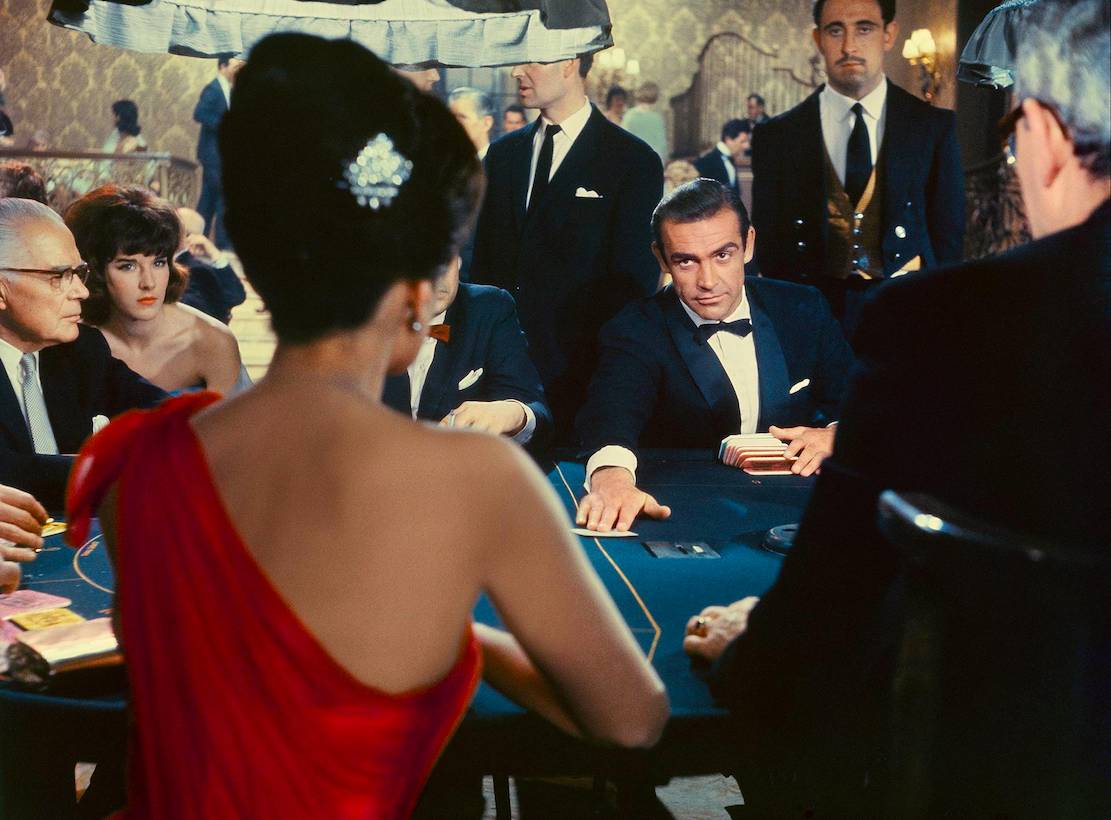 The plot of the
movie version of Dr. No
reveals that Dr. No works for SPECTRE and attempts
to enlist Bond as an agent. Of course, 007 refuses,
and he and Honeychile are taken away and beaten
before he escapes through an air vent and
infiltrates Dr. No’s control center just as he is
about to jam another rocket launch. After a
struggle, Dr. No falls into a nuclear reactor pool
and is boiled to death. The reactor overheats and
just after Bond and Ryder escape, the island blows
up, and the couple is rescued by a ship from the
Royal Navy.
The plot of the
movie version of Dr. No
reveals that Dr. No works for SPECTRE and attempts
to enlist Bond as an agent. Of course, 007 refuses,
and he and Honeychile are taken away and beaten
before he escapes through an air vent and
infiltrates Dr. No’s control center just as he is
about to jam another rocket launch. After a
struggle, Dr. No falls into a nuclear reactor pool
and is boiled to death. The reactor overheats and
just after Bond and Ryder escape, the island blows
up, and the couple is rescued by a ship from the
Royal Navy.At the beginning of the movie Bond makes his first appearance, in tuxedo, at the card tables at London’s Ambassadeurs Club (left), then he returns to MI6 headquarters, where, establishing a tradition, he tosses his hat (a black homburg from London’s hatmaker James Lock & Co.) onto the coat rack in M’s secretary Moneypenny’s office.
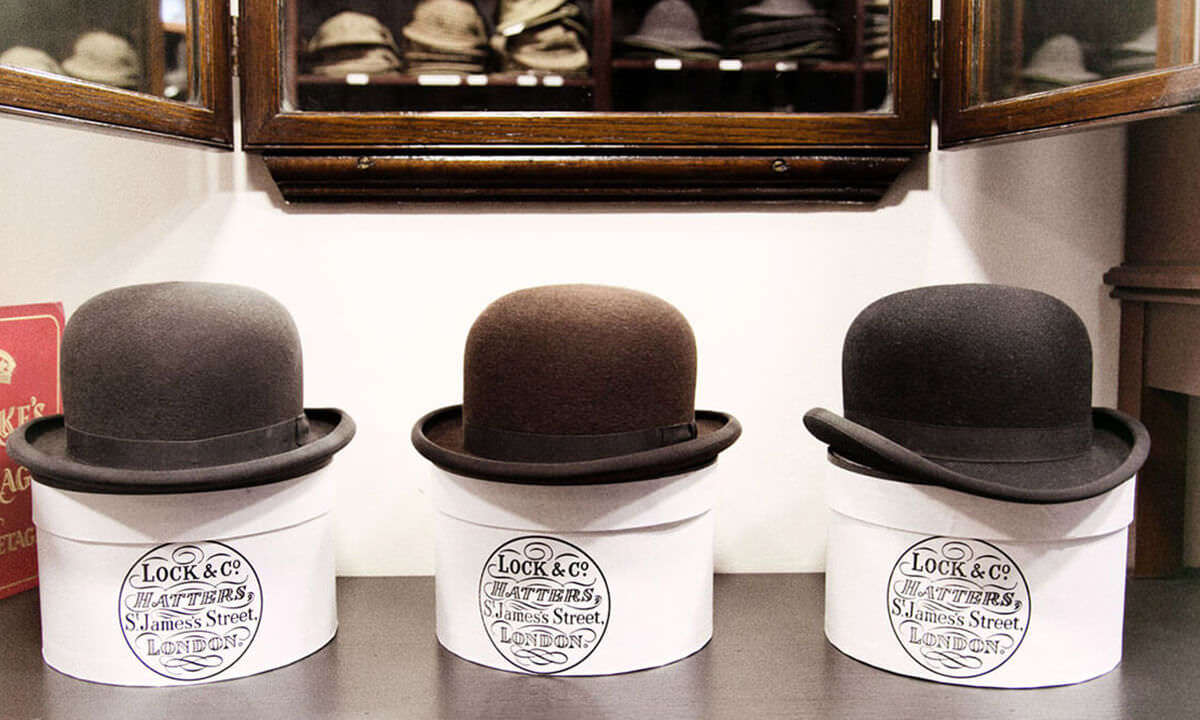 Bond
then flies to Jamaica, meets CIA agent Felix Leiter
and is invited to lunch at King’s House. In his
hotel 007 finds Smirnoff Red Label and Blue
Label vodka and makes himself a martini, then joins
Leiter and others at the Queens Club for drinks.
Later he meets Quarrel at Morgan’s Harbour Hotel
(now the Grand Port Royal Hotel in Kingston) for
lunch, with a tipple of Black & White Scotch.
Bond
then flies to Jamaica, meets CIA agent Felix Leiter
and is invited to lunch at King’s House. In his
hotel 007 finds Smirnoff Red Label and Blue
Label vodka and makes himself a martini, then joins
Leiter and others at the Queens Club for drinks.
Later he meets Quarrel at Morgan’s Harbour Hotel
(now the Grand Port Royal Hotel in Kingston) for
lunch, with a tipple of Black & White Scotch. 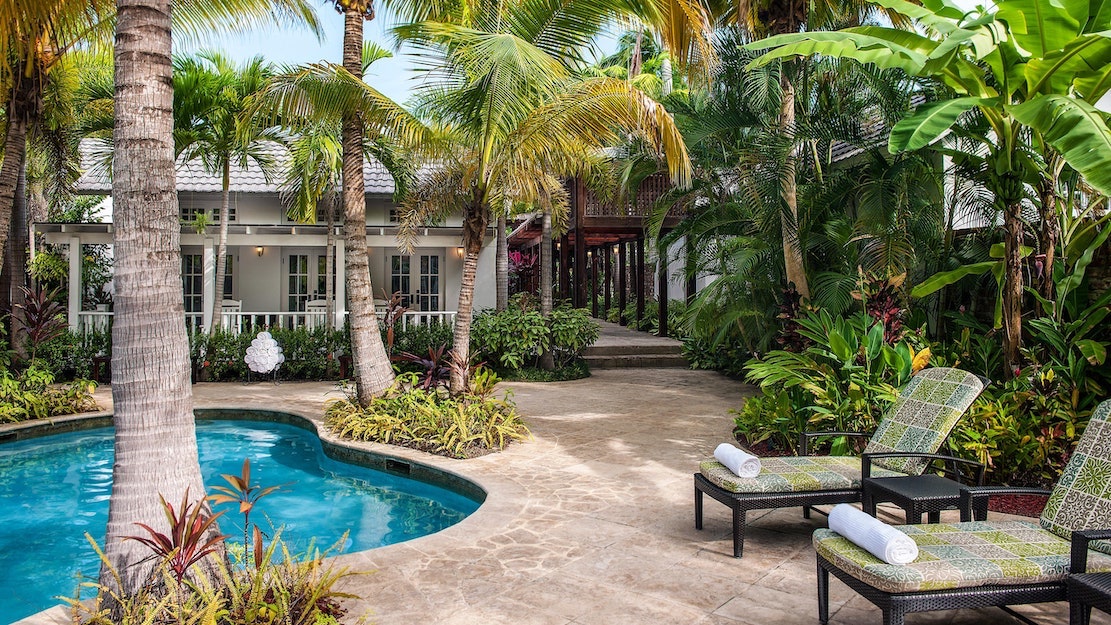 Bond
spends the night with Rosie Carver at Cottage 10 at
the Half Moon Resort (left) before he
dispatches an assassin sent to kill him. After the man
expends his bullets shooting at a fluffed up pillow,
Bond, sitting in a wicker chair, says, “That’s a
Smith & Wesson and you’ve had your six,” then
nonchalantly shoots the man dead, an act that at the
time was shocking to audiences not used to such
cold-blooded “License
Bond
spends the night with Rosie Carver at Cottage 10 at
the Half Moon Resort (left) before he
dispatches an assassin sent to kill him. After the man
expends his bullets shooting at a fluffed up pillow,
Bond, sitting in a wicker chair, says, “That’s a
Smith & Wesson and you’ve had your six,” then
nonchalantly shoots the man dead, an act that at the
time was shocking to audiences not used to such
cold-blooded “License to Kill” in a hero.
to Kill” in a hero. The famous scene with Ryder (Ursula Andress) coming out of the surf was filmed at Laughing Waters in Ochos Rios, with other scenes set at Dunn’s River Falls. After Bond and Ryder are captured and brought to No’s underground lair, Bond spots a painting of the Duke of Wellington by the Spanish artist Goya that had actually been stolen the year before from London’s National Gallery (in real life not recovered for 50 years, stolen by a 20-year-old van driver).
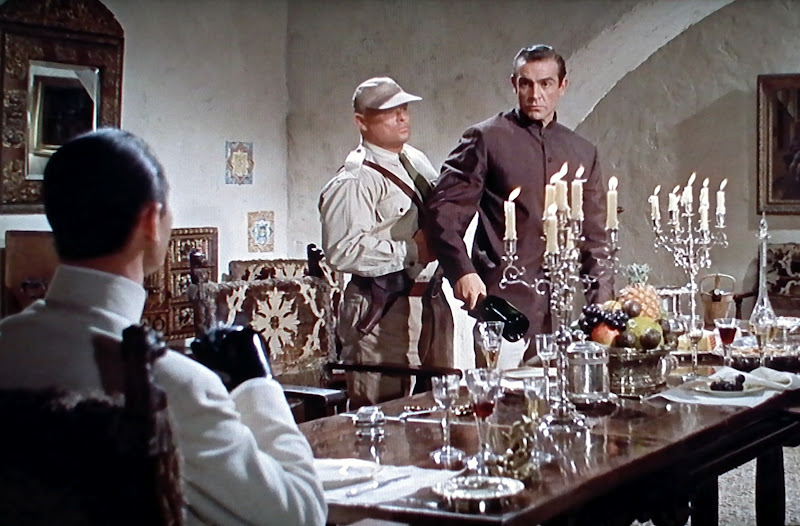 At
dinner, Dr. No brings a Dom Pérignon 1955, and Bond
sniffs, “I prefer the ’53 myself,” then snatches the
bottle and a steak knife to kill No, but is
restrained.
At
dinner, Dr. No brings a Dom Pérignon 1955, and Bond
sniffs, “I prefer the ’53 myself,” then snatches the
bottle and a steak knife to kill No, but is
restrained. The success of Dr.No worldwide gave the go-ahead to more Bond movies, not to mention a slew of imitators and spoofs of the spy genre.
❖❖❖
THE STANDARD GRILL
The Standard, High Line
848 Washington Street
212-645-4100
By John Mariani
.jpg)
Photo: Todd Eberle
Food Photos: Alex Staniloff
The High Line is one of New York’s most
wondrous rehabilitations, crafted from a
rotting, rusty unused elevated subway line into
a 1.5-mile pedestrian’s garden walk. Its
immediate success drew restaurateurs who knew
the neighborhood, adjacent to the former
Meatpacking District, would be a vibrant nexus
for people to gather, eat and drink, and The
Standard Grill in the Standard High Line Hotel
has become an anchor, with the boisterous
Biergarten next door. 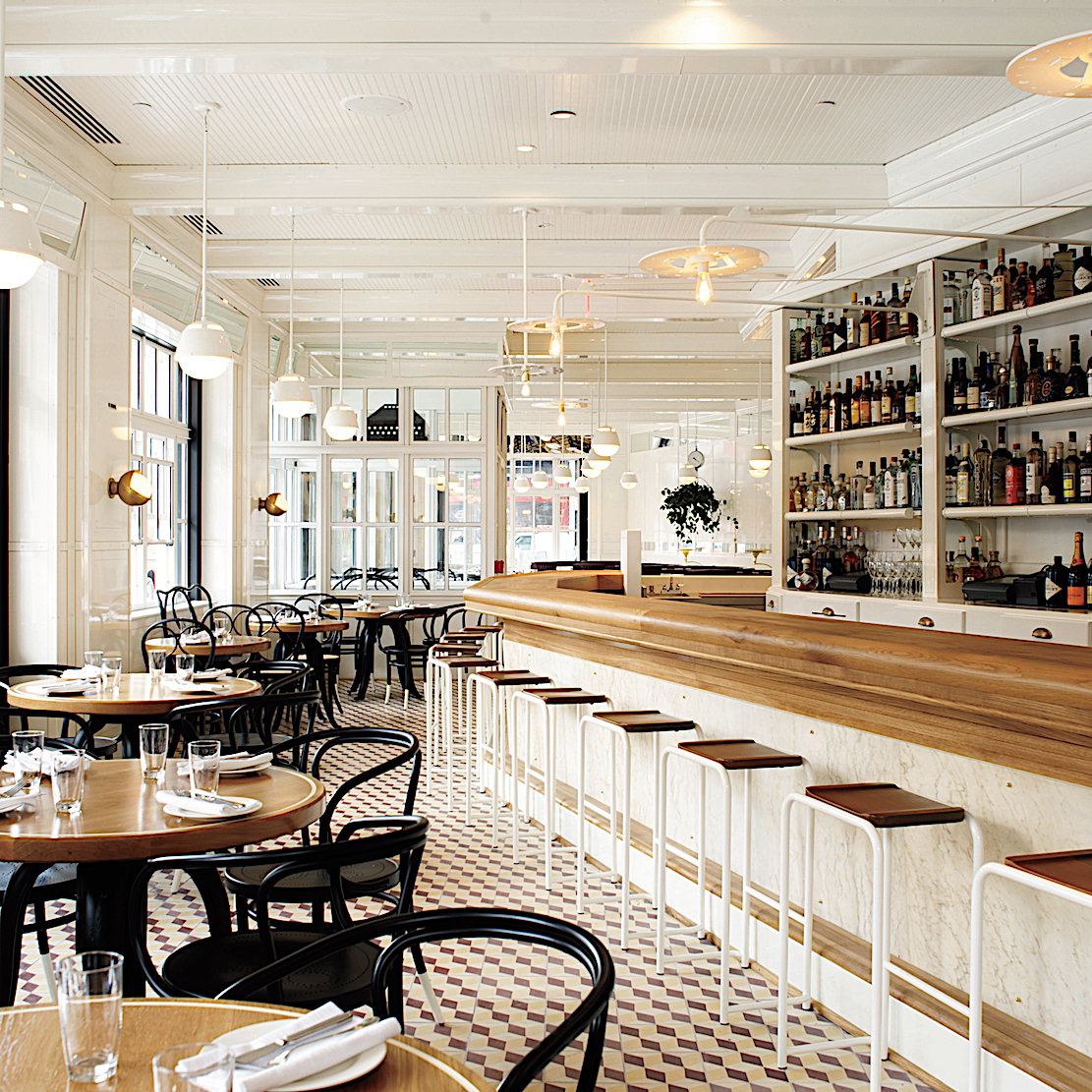
The Standard is a grand space, with a
lovely all-white room as you enter, then, beyond,
a big handsome room with a copper penny floor,
spacious booths and high barrel-vaulted ceiling.
When full, it can be loud, so ask for a table
nearest the open kitchen, away from the bulk of
diners.
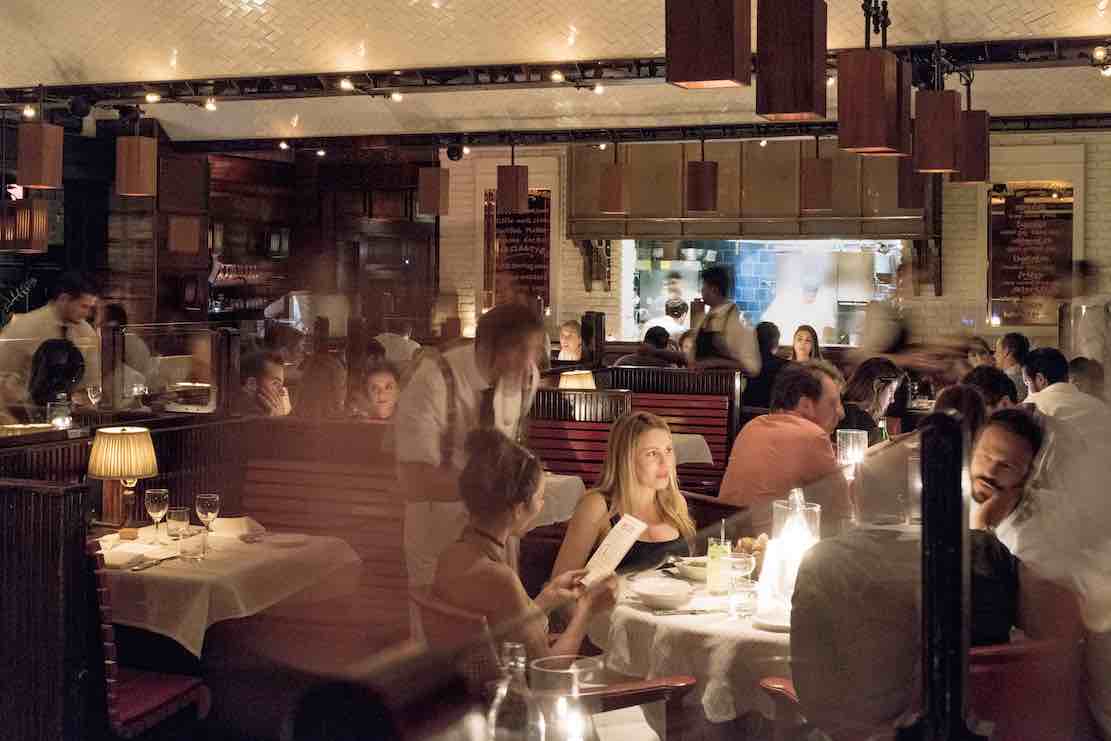 Its
website describes The Standard as “classic New York,
blending traditional steakhouse with New
American cuisine,” which is a fair enough
description for a menu that thoroughly covers
all the bases without becoming a screed.
Executive Chef Jean-Paul Lourdes knows his way
around a grill as well as he does the seafood
station, and his French onion soup ($14), thick
with Comté cheese and an onion relish, would be
a paragon of the form had it not used rye bread.
Its
website describes The Standard as “classic New York,
blending traditional steakhouse with New
American cuisine,” which is a fair enough
description for a menu that thoroughly covers
all the bases without becoming a screed.
Executive Chef Jean-Paul Lourdes knows his way
around a grill as well as he does the seafood
station, and his French onion soup ($14), thick
with Comté cheese and an onion relish, would be
a paragon of the form had it not used rye bread.
The raw bar
offers three kinds of oysters by the piece
($3-$4.50), shrimp cocktail ($24) and a chilled
half lobster ($36),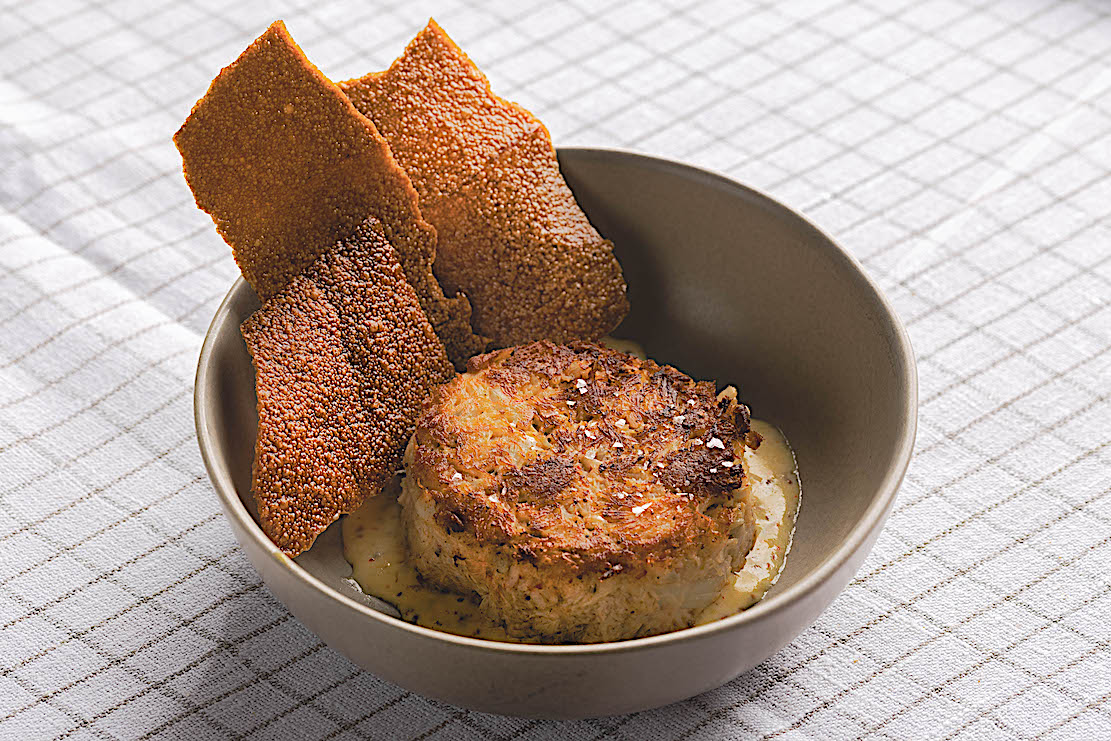 followed by a selection of cheeses, cured meats
and snacks. For
starters there is that wonderful onion soup and a
fine, meaty Jonah crab cake with stone ground
mustard ($32). Beef tartare gains some
punch from Calabrian chilies and texture from
sunchokes ($23).
followed by a selection of cheeses, cured meats
and snacks. For
starters there is that wonderful onion soup and a
fine, meaty Jonah crab cake with stone ground
mustard ($32). Beef tartare gains some
punch from Calabrian chilies and texture from
sunchokes ($23).
From the grill you can opt for six cuts,
including a very good 12-ounce dry aged New York
strip with smoked harissa—at $48 something of a
bargain these days. Go up to 38 ounces for the
tomahawk and fermented rye mustard and you’ll pay
$145, but that will easily serve three people.
Quite remarkable and intensely flavorful was an
18-ounce slow-roasted Nebraska Angus Prime rib
($58) 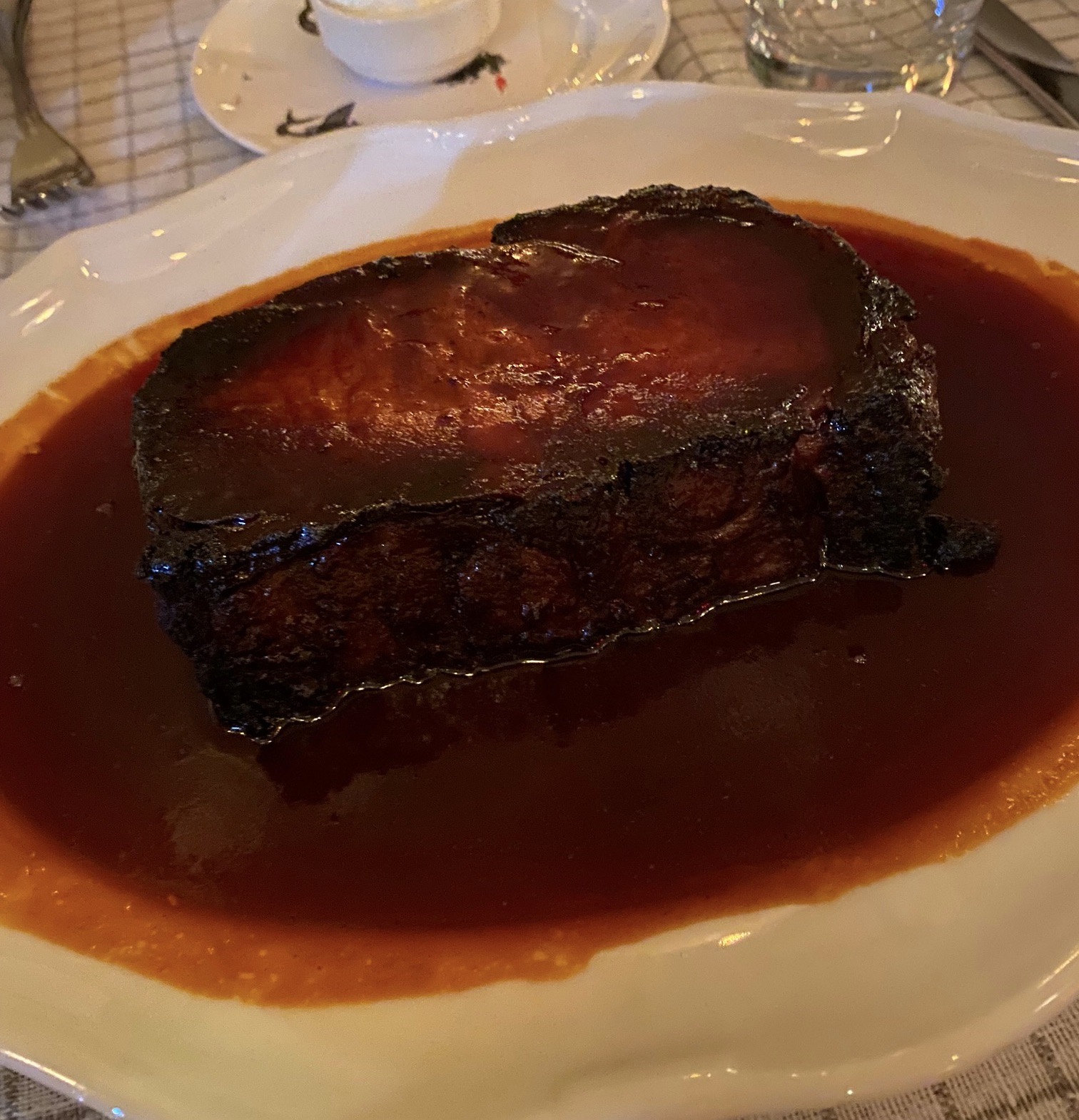 that has been
aged for 45 days and then fermented for 72 hours
in sushi rice before going in the oven for four
hours. It’s a magnificent piece of beef with the
right tang of aging, and it is lavished with a
reduction of sweetened juices that makes it all
the more savory. Our table of four each enjoyed an
ample slice and then I still
took almost half of it home for lunch.
that has been
aged for 45 days and then fermented for 72 hours
in sushi rice before going in the oven for four
hours. It’s a magnificent piece of beef with the
right tang of aging, and it is lavished with a
reduction of sweetened juices that makes it all
the more savory. Our table of four each enjoyed an
ample slice and then I still
took almost half of it home for lunch.
Photo:
John Mariani
Half of a
well-fatted “Million Dollar Chicken” ($30) has
equal 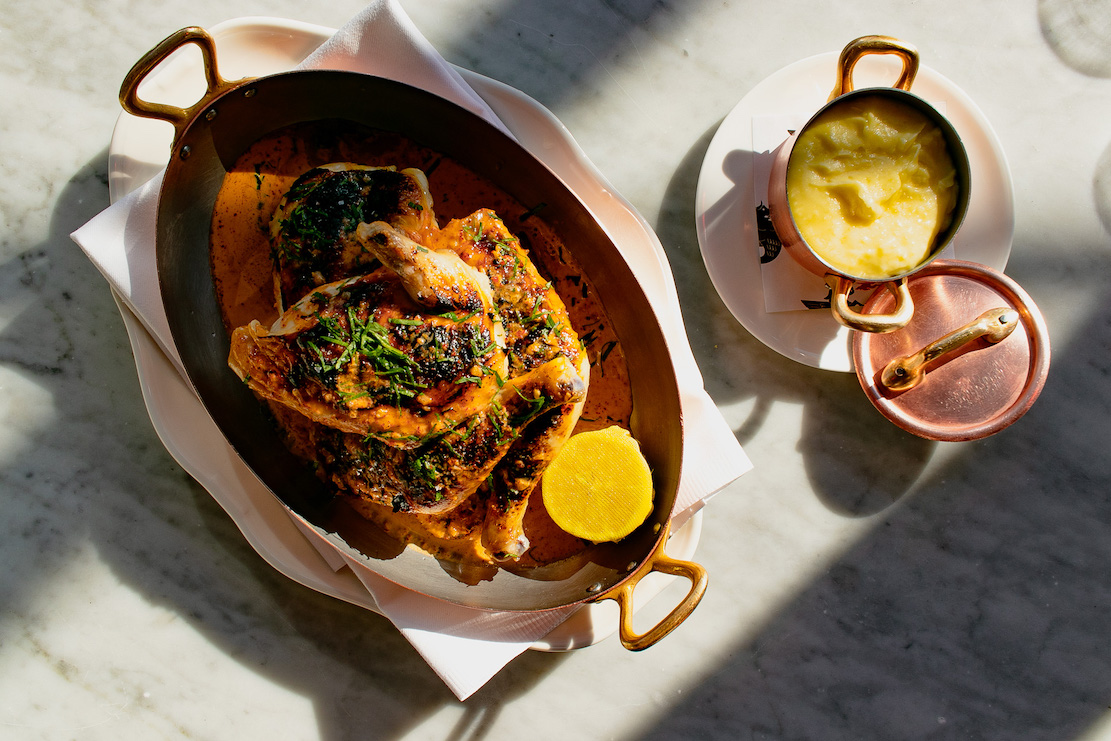 heft,
enhanced by Aleppo pepper and preserved lemon,
again with impeccably reduced juices. So, too, the
lime leaf broth buoying a roasted sea bass with
saffron and potato ($36) was as hearty a seafood
dish as you’ll find.
heft,
enhanced by Aleppo pepper and preserved lemon,
again with impeccably reduced juices. So, too, the
lime leaf broth buoying a roasted sea bass with
saffron and potato ($36) was as hearty a seafood
dish as you’ll find.
Indeed,
no one would dare complain about the portions here
and prices that are just as easy to swallow. By
the way, don’t fail to order the fabulously rich
salt baked potato puree ($12), of which my
tablemate observed, “They might even have added
potato to the butter!” White asparagus ($14),
which don’t travel well, were that night sinewy
and tough to chew through.
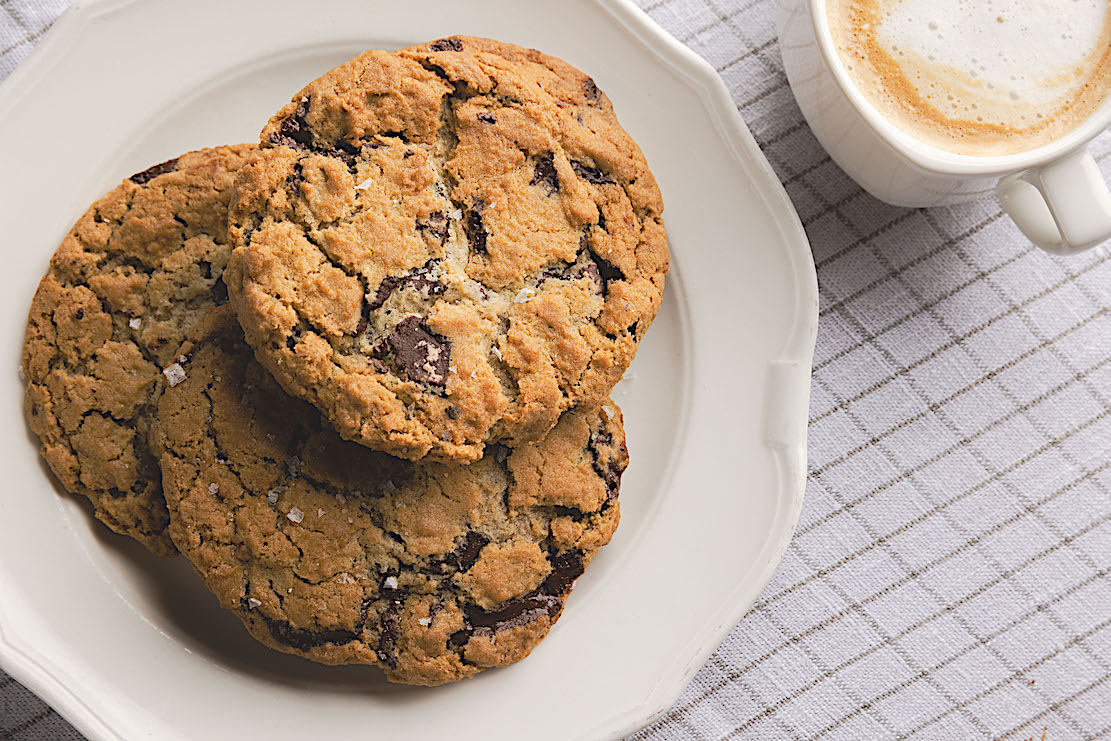 You
should get a dessert or two at The Standard Grill
because they are lavish and as satisfying for a
big guy as for a small child: A gloppy ice cream
sundae ($9); a good cheesecake ($9); a
chocolate-coffee mousse with whipped cream
explosion called “The Deal Closer” ($14); and
irresistible warm chocolate chip cookies ($9) with
a glass of milk. If you like.
You
should get a dessert or two at The Standard Grill
because they are lavish and as satisfying for a
big guy as for a small child: A gloppy ice cream
sundae ($9); a good cheesecake ($9); a
chocolate-coffee mousse with whipped cream
explosion called “The Deal Closer” ($14); and
irresistible warm chocolate chip cookies ($9) with
a glass of milk. If you like.
The wine list is entirely appropriate for
this kind of fare and, for its size,
unintimidating. There are a lot of interesting
whites under $60, and about a dozen reds under
$100.
The Standard Grill has clearly attracted a
New York crowd—the women guests dress well though
most of the men dress down—but it’s obviously
become a good introduction for foreign visitors to
learn about American beef, cosmopolitan taste and
bang for the buck.
Open daily for dinner.
ANOTHER VERMEER

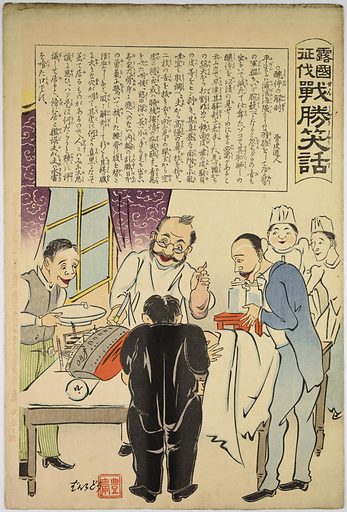 David
filled Katie in on his conversation with Kiley,
indicating that he was doing his best at least
to alert his Interpol colleagues of his
suspicions.
David also mentioned the arsenic in
Saito’s blood.
David
filled Katie in on his conversation with Kiley,
indicating that he was doing his best at least
to alert his Interpol colleagues of his
suspicions.
David also mentioned the arsenic in
Saito’s blood.
“Kiley said the medical examiner said it
might be in the blood as some sort of Asian
treatment for Saito’s syphilis,” said David. “I’m
going to call a guy I know who works in the
coroner’s office here in New York. What are you up
to?”
“I have an appointment with Coleman,” Katie
said. “I’m not sure how much I want to hint at
about what you and I believe, but I think I need
to feel him out about the fact that three people
on the list of six possible bidders, plus Saito,
have not exactly had a good year. He’s
still got, what, three more profiles to do? He got
that trimmed down list from us, remember, but I
doubt he’s put two and two together about the
group yet. I’ll let you know what he thinks.”
David’s contact at the coroner’s office was
considered one of the city’s top forensic
scientists, Dr. John Malone, who’d been at his job
for nearly thirty years. David had worked with him
on a number of cases of people rubbed out by the
mob, admiring the ultra-clinical way Malone would
describe the blows a victim took to the head and
neck from a metal, not a wooden, baseball bat. “The
metal bats don’t have any give and thereby inflict
more damage with fewer blows; also, no wood
splinters to work with,” David remembered Malone
once saying.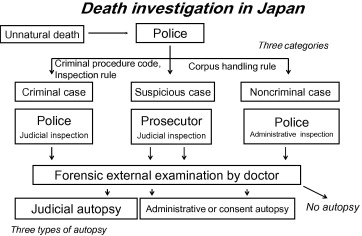
Malone was never less than official in his
statements, both to the police and to the press,
refusing to give any details he had not positively
pinned down, so David knew Malone would not
conjecture about the arsenic in Saito’s blood
beyond what he was told.
“Can I get a copy of the autopsy?” was the
first thing Malone asked David over the phone.
David doubted Kiley had gotten hold of the
document, which would have been in Japanese
anyway.
“I could ask, but it might take a while.”
“Well, then, I can’t say anything specific
or in any way definitive. At one time arsenic was
a good way to slowly get rid of your opponent by
building it up in the bloodstream, but it’s been
pretty much out of favor as a poison for fifty
years. Of course, massive doses would kill you
immediately—it’s nasty stuff, destroys your blood
cells, sends you into shock.
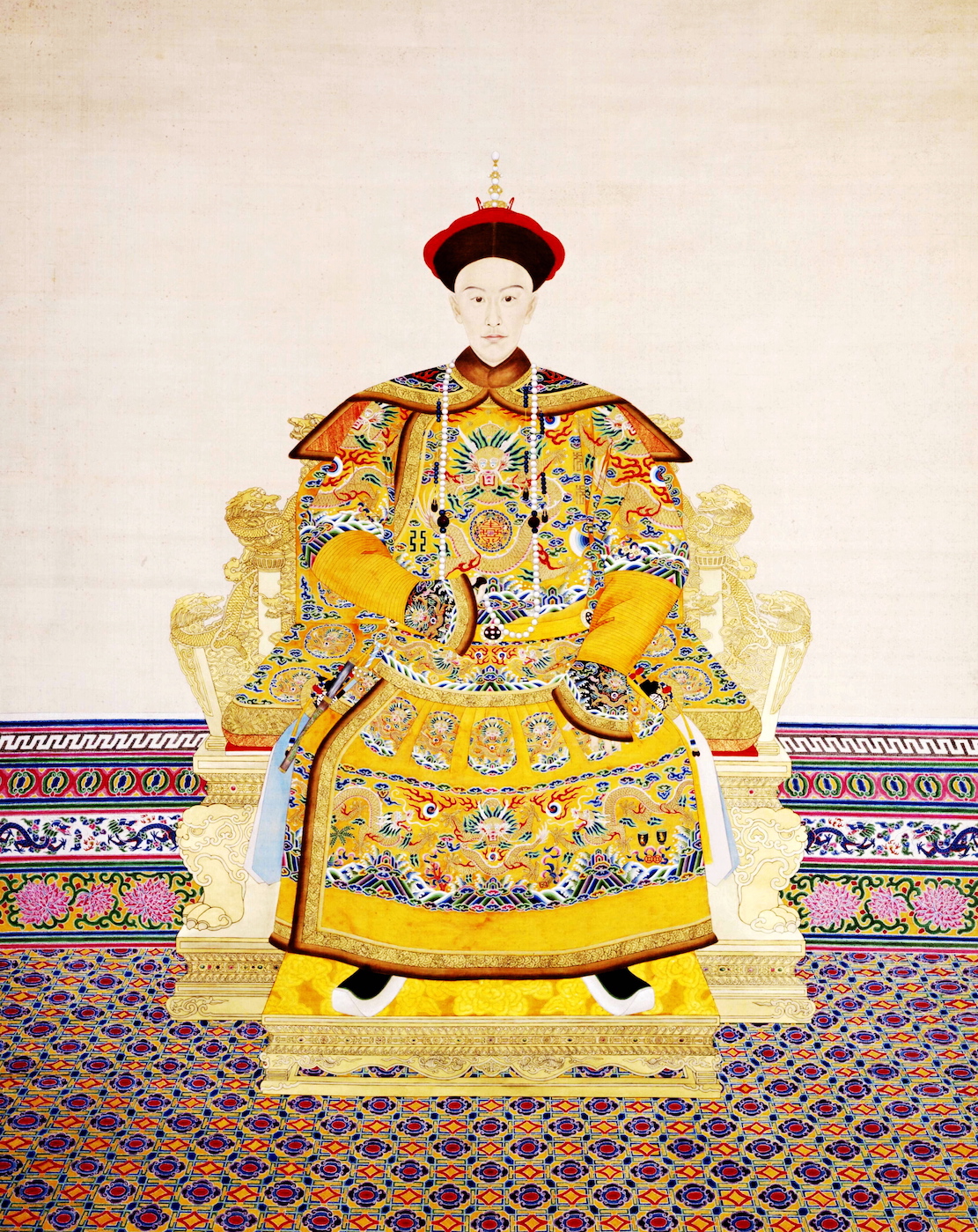 “It
is interesting to note that many historians and
forensic scientists believe the last Chinese
emperor, Guangxu (left), was poisoned with
arsenic by the empress—her name was Cixi (below)—and
her political ally Yuan Shikai. Reports
were they found that Guangxu had 2,000 times the
amount of arsenic in him that is naturally extant
in the body. The day Guangxu died,
“It
is interesting to note that many historians and
forensic scientists believe the last Chinese
emperor, Guangxu (left), was poisoned with
arsenic by the empress—her name was Cixi (below)—and
her political ally Yuan Shikai. Reports
were they found that Guangxu had 2,000 times the
amount of arsenic in him that is naturally extant
in the body. The day Guangxu died, 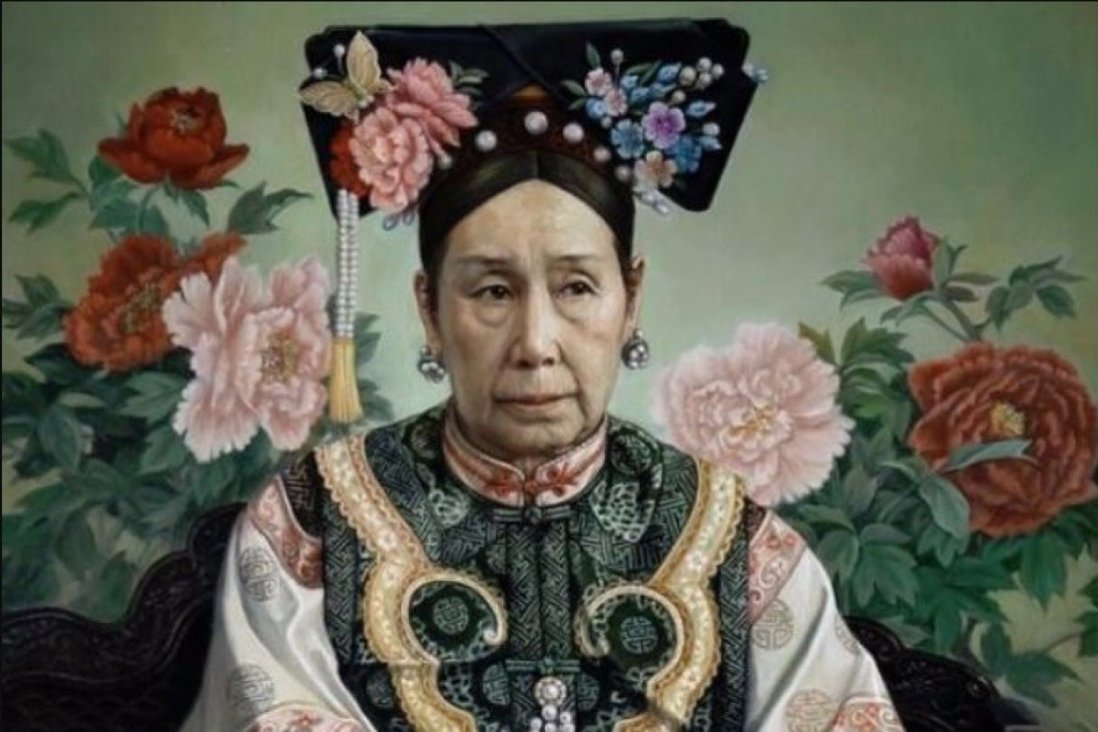 Cixi
appointed a new emperor—he was just shy of three
years old. Then, the very next day Cixi died. Lots
of intrigue in that court.”
Cixi
appointed a new emperor—he was just shy of three
years old. Then, the very next day Cixi died. Lots
of intrigue in that court.”
“And
did Cixi have arsenic in her blood?”
“I don’t think that was ever tested for.
More to the point, David, it is very
true that arsenic was once considered a miracle
drug for treating syphilis. They even called it
‘the Magic Bullet.’ Maybe you read the book or saw
the movie with Edward G. Robinson, Dr. Ehrlich’s
Magic Bullet? Ehrlich had been working on a
cure for bubonic plague, but in 1909 he hooked up
with two Japanese bacteriologists, Sahachiro Hata
(left) and Shibasaburo Kitasato, and a 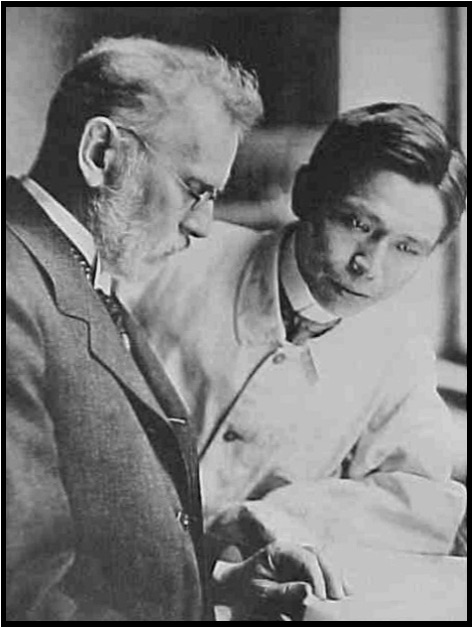 year later
they came up with a compound called Salvarsan they
marketed as ‘the arsenic that saves live.’ It was
a pretty good treatment for advanced syphilis
before penicillin came along in 1928, though it
wasn’t used until 1942 and certainly unavailable
in Japan during the war.”
year later
they came up with a compound called Salvarsan they
marketed as ‘the arsenic that saves live.’ It was
a pretty good treatment for advanced syphilis
before penicillin came along in 1928, though it
wasn’t used until 1942 and certainly unavailable
in Japan during the war.”
“So you’re saying that Saito might have
been on an arsenic treatment for his advanced
syphilis and that’s what showed up in the blood?”
“Possibly.
I’d have to know the concentration of the
arsenic to say much more, and if it had been a
very large amount—enough to kill him quickly—it
had probably left his blood before the autopsy
found it.”
“But it’s not out of the question that
Saito was poisoned with arsenic?”
“That’s not something I would ever answer
unless I did the autopsy, and that body is now in
the ground.”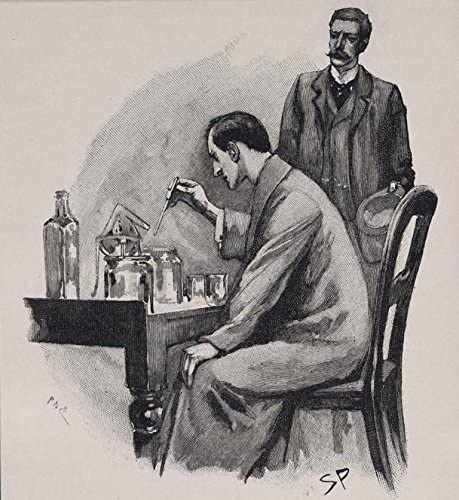
As always, David was
astounded at Malone’s breadth and depth of
knowledge, which seemed requisite for a job in
forensic science. He used to occasionally call
Malone “Sherlock,” a comparison Malone swept away
as complete nonsense, saying, “What
Holmes knew back then would just about fill a
syringe compared to what we know today,” then
adding, “Though that’s not Holmes’s fault.”
*
*
*
Katie’s
appointment with Coleman took place outside his
office.
“The a/c is on the fritz,” he told her.
“Can you meet me at the coffee shop around the
corner? We can speak more privately there anyway.”
The coffee shop was nearly empty at three
o’clock, and, this being Friday, Coleman looked
exhausted, nursing a cold.
“You don’t look so good,” Katie told him.
“Lingering summer cold. Working
too hard, too. I just hope when this whole Vermeer
auction thing is over I can take some time off. A place
where the only art on the wall is a poster of the
Caribbean island I’m on.”
“So, any more news?”
“Nothing that wasn’t in Wednesday’s
edition.”
Both of them ordered tea with lemon.
Katie filled him in on some of the new
things she had learned in the past two weeks but
avoided the subject of any criminality. She
spoke about Balaton, Stepanossky, Dorenbosch,
Shui, Danielides and Correia but added little to
what Art
Today had already published.
“Is there a date for the auction?” she
asked.
 “Some time in November, maybe before
Thanksgiving. Nobody will know until the approved
experts take a look at the painting.”
“Some time in November, maybe before
Thanksgiving. Nobody will know until the approved
experts take a look at the painting.”
“Do you know who they’ll be?”
“I have the names of a couple; there may be
others. I know that a Vermeer expert from the
Rijksmuseum in Amsterdam will be going and another
from the Kunstmuseum in Vienna (left). They own
a Vermeer and are considered first-rate in
restoration of old paintings. I suspect someone
from the Louvre will go; they own a couple of
Vermeers, including The
Astronomer.”
“What
about technical experts, the ones who look at the
paint and canvas and what’s underneath?”
“There’s a lot of debate about scientific
methods versus the eye of the experts. An X-ray
can tell you if there’s painting underneath or
some initial sketches, and chemical analysis of
the paint itself is the new frontier in the
field.”
“Will any of those people go to Hong Kong?”
“I don’t know. It’s
hard to figure what the Chinese will allow because
they haven’t been in this kind of market very
long. They certainly have little expertise in 17th
century Dutch painting. I doubt very much they’re
going to allow much scientific analysis because it
will take too long.”
“But, if they don’t have absolute
authentication, will they really be able to sell
it as a Vermeer, much less for $100 million?”
“You’re asking me questions I don’t know
the answers to, Katie,” Coleman said, sounding
annoyed. “Aw, Jeez, Katie, I’m sorry, I just feel
lousy. I
didn’t mean to snap. I gotta go home and get in
bed for the weekend.”
“I understand. Just tell me one thing: Is
there someone I can contact who is an expert of a
kind who might have a deeper understanding of how
this is going to play out? My art professor friend
at Fordham is very smart but she’s not an expert
of that kind.”
“Okay,” Coleman said, “write down this
name. She’s an expert on the period in the
Netherlands and has written a lot about the
masters of the time. I know she’s done a monograph
on Vermeer. Her
name is Alexandra Janson and she’s currently
teaching at Columbia.”
“Thanks, John,” said Katie. “Now go home
and get some rest.”
© John Mariani, 2016
❖❖❖
WEST COAST WINES:
STILL BIG AND BOLD AFTER ALL THESE YEARS
By John Mariani

"Judgment of Paris" wine tasting, 1976
Back
in the 1980s a California writer for Wine
Spectator, for which I was also writing at
the time, accused me of having an “East Coast
palate,” by which he meant I was so used to
drinking French and Italian wines that I could not
appreciate the wines of California for their
regional distinctions. To say that I preferred
European wines back then, as I do now, had nothing
to do with bias but to a well-founded assessment
that at the time, when California wines were in
fast ascendancy in the wine press, far too many of
them were deliberately made to be what were called
“blockbusters,” high in alcohol and terribly
over-oaked.
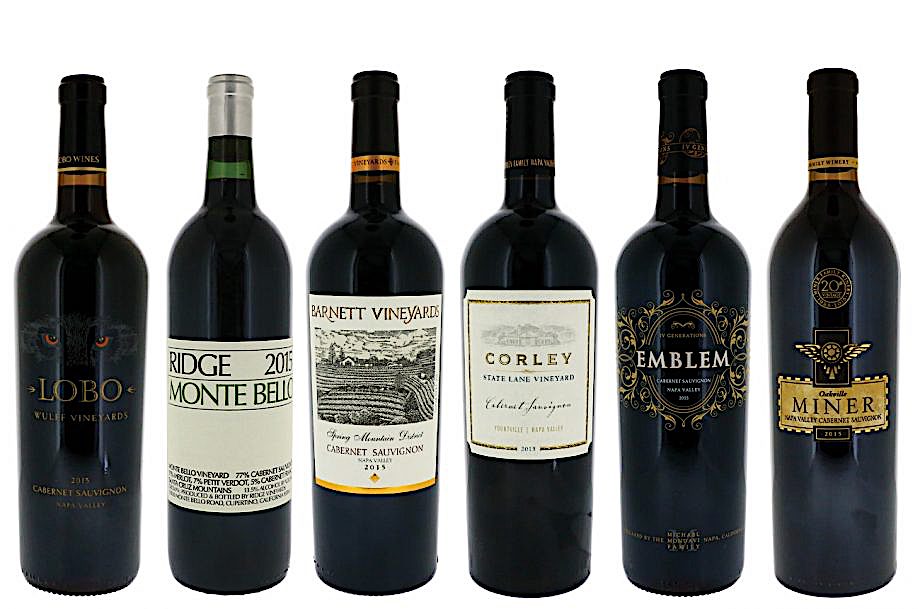 Chardonnays
lacking acid tasted more like vanilla caramel than
wine, which is easy enough to accomplish with a
grape that is fairly neutral on its own. The reds
were usually made from a single varietal like
Cabernet Sauvignon, which produced wines one wine
steward in Colorado said would “blow your doors
off”—not a quality I look for in a wine. Zinfandels
tended to be heavy and dull, Pinot Noirs tasted like
fruit bombs, Sauvignon Blancs like fruit punch and
Rieslings were flabby.
Chardonnays
lacking acid tasted more like vanilla caramel than
wine, which is easy enough to accomplish with a
grape that is fairly neutral on its own. The reds
were usually made from a single varietal like
Cabernet Sauvignon, which produced wines one wine
steward in Colorado said would “blow your doors
off”—not a quality I look for in a wine. Zinfandels
tended to be heavy and dull, Pinot Noirs tasted like
fruit bombs, Sauvignon Blancs like fruit punch and
Rieslings were flabby.
Obviously, these objections were not true of
all California wines back then, and much was made of
how they compared so favorably at a famous blind
tasting in Paris in 1976, which made sense because
they were such big, in-your-face examples by
comparison to French examples made with the same
grapes. So, when Robert M. Parker Jr (right)
came onto the scene with his newsletter Wine Advocate two
years later, pouring praise and number ratings on
out-of-kilter, unbalanced California blockbusters,
the wine industry and media followed, resulting in
massive wines with 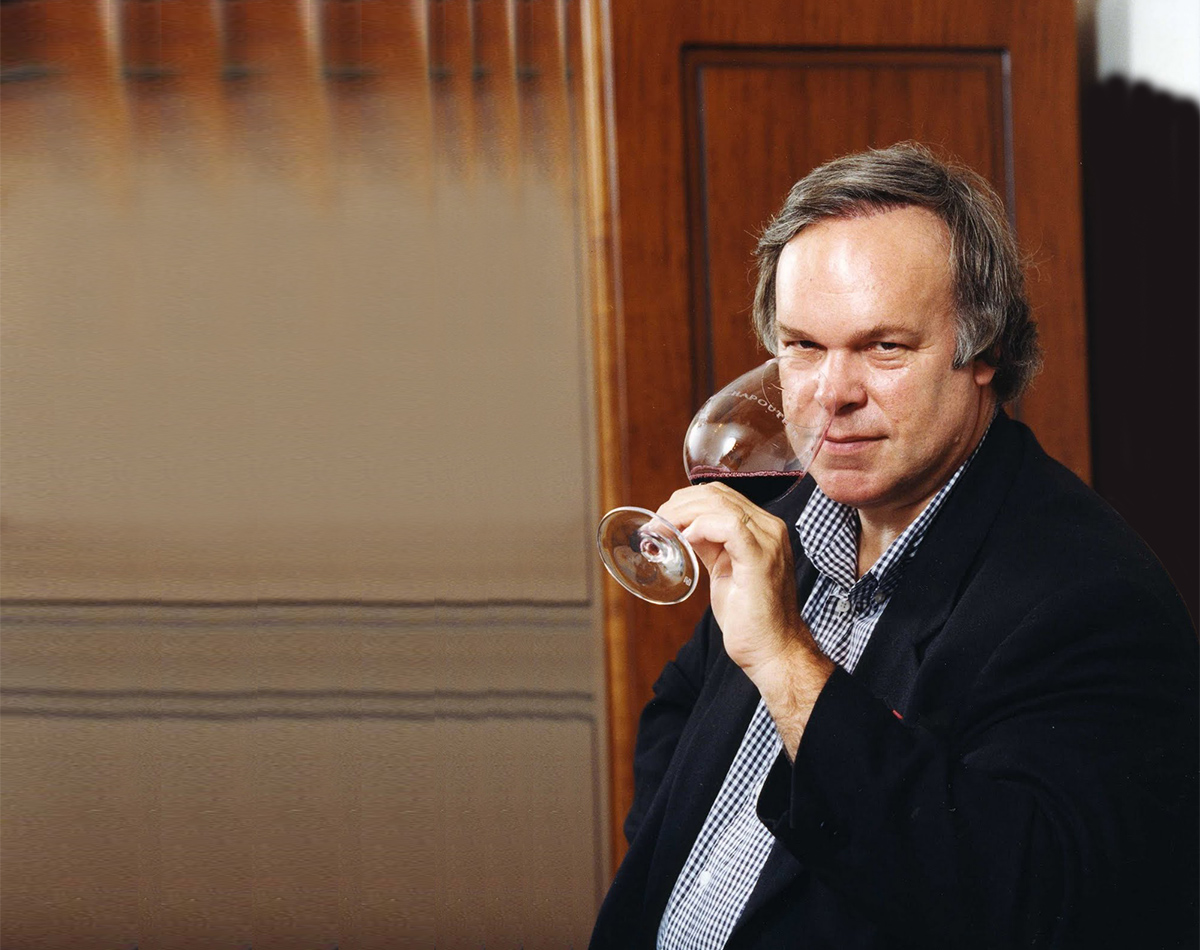 none of the
finesse of Bordeaux and Burgundy, Piedmont and
Tuscany.
none of the
finesse of Bordeaux and Burgundy, Piedmont and
Tuscany.
Parker’s power was such that a wine he
awarded anywhere near 100 points would sell out
overnight and be priced hundreds of dollars over its
SRP. (For the record, Parker always denied he had an
affinity for high alcohol wines, though his ratings
suggest otherwise; I do know winemakers who, off the
record, say they chose their bottles carefully when
Parker came to visit their wineries; others put
their filtration skeins out of sight because Parker
favored unfiltered reds.)
So drenched in the
idea of making monster wines were California
winemakers of the 1980s that they initially
disparaged the trademarked name Meritage in 1988 for
a group of wineries that sought to develop more
complexity in California wines by blending varietals
in the traditional Bordeaux style. Its rubrics
included:
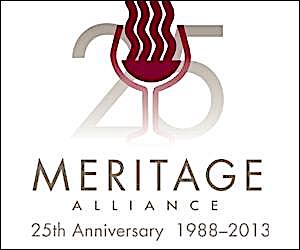 1. They must be a
blend of the traditional Bordeaux grape varieties:
Cabernet Sauvignon, Merlot, Cabernet Franc, Petit
Verdot, Malbec, Gros Verdot, and Carminère for red;
Sauvignon Blanc (Sauvignon Musque), Sémillon, and
Muscadelle for white.
1. They must be a
blend of the traditional Bordeaux grape varieties:
Cabernet Sauvignon, Merlot, Cabernet Franc, Petit
Verdot, Malbec, Gros Verdot, and Carminère for red;
Sauvignon Blanc (Sauvignon Musque), Sémillon, and
Muscadelle for white.
2. It must be the winery’s best wine of its
type.
3.
It must be produced and bottled by a U.S. winery
from grapes that carry a U.S. appellation of origin.
4.
It must be limited in production to no more than
twenty-five thousand cases from each vintage by a
single winery.
5.
Association members’ blended wines may carry the
word “Meritage” on their labels, although member
wineries may instead carry only their own
proprietary names.
In 1993 The Meritage Association petitioned
the Bureau of Alcohol, Tobacco and Firearms to recognize Meritage as
a “designation of varietal significance.” Since
then, the California wine industry has changed
substantially and garnered legitimate
praise—including in my own wine columns—for more
refinement and more intelligent blending. High
alcohol, however, remains a widespread effort not
entirely explained 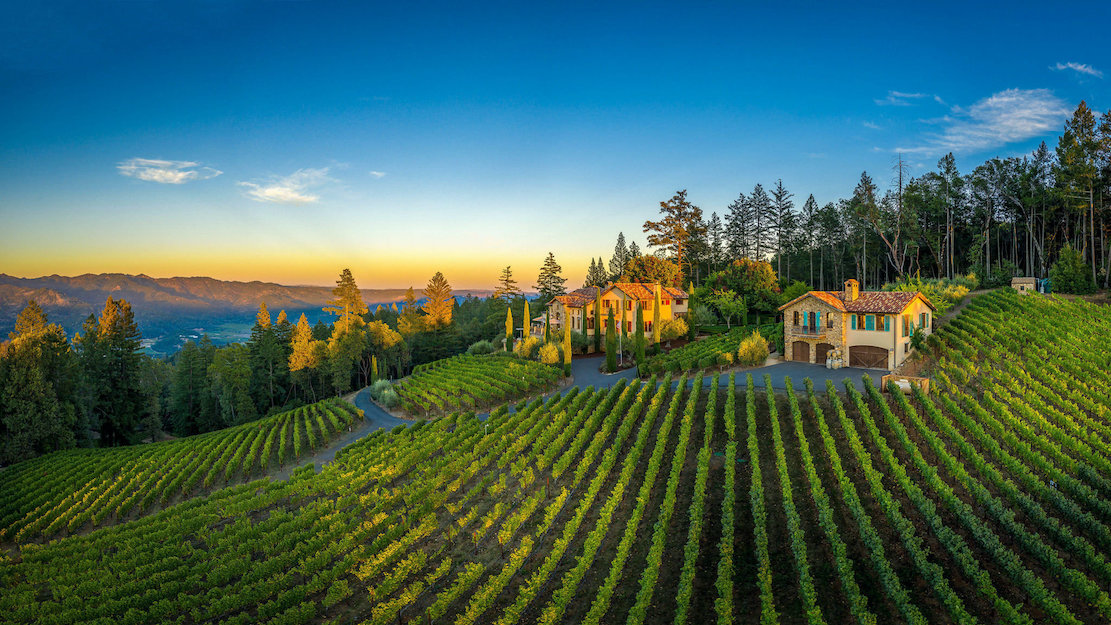 by the effects of
global warming.
by the effects of
global warming.
Blending is essential for Cabernet Sauvignon.
The other night, with a steak dinner, I drank a
highly regarded, very expensive 100% Napa Valley
Cabernet with a massive 15.2% alcohol level that was
so inky, tannic and one-dimensional as to make a
single glass more than enough. And there seems no
reason to believe it would age in one direction or
another, which is another problem that occurs when
wineries release very big wines after a year or two,
rather than see how they age back at the winery.
Given the capital investment of California wineries,
with a single acre going for a million dollars, plus
planting, buildings, bottling lines, transportation
and so on, getting one’s product to market as soon
as possible is understandable. But wines are not
tomatoes and need a lot of care before they reach a peak of quality,
and even then, they may require more aging.
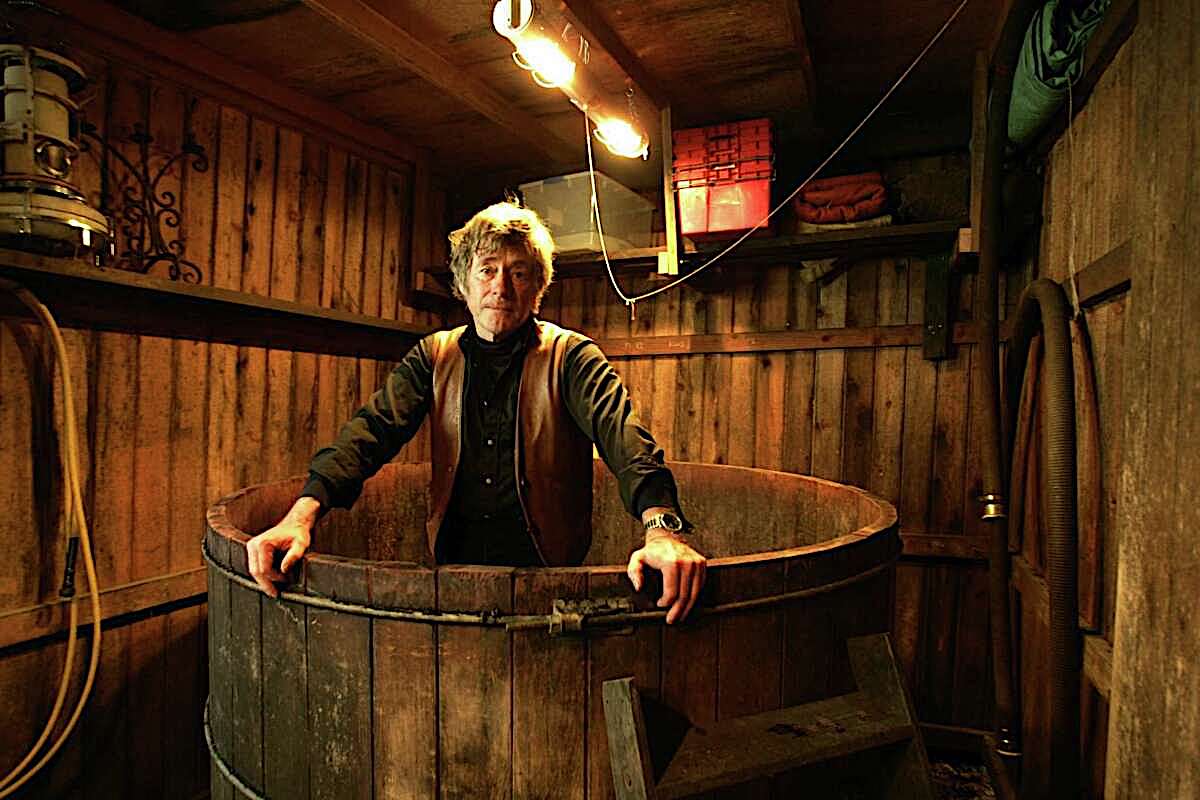 Just
last week the erudite winemaker Sean Thackrey (left),
79, of Bolinas, California, died after a winemaking
career that began in 1973 during the time the
state’s wines were gaining traction, though he did
not release his first bottling, called Aquila, a
blend of Cabernet Sauvignon and Merlot, until 1981.
He eschewed much of the agroscience behind
viniculture, saying, ““My only purpose in the entire
universe as a winemaker is to produce pleasure,”
turning to the Greek poet Hesiod’s text “Work and
Days” for guidance. He regarded all the talk about
terroir a “self-serving piety” and “viticultural
racism” and that legal appellations were nothing
more than a “gerrymandered marketing gimmick.”
Just
last week the erudite winemaker Sean Thackrey (left),
79, of Bolinas, California, died after a winemaking
career that began in 1973 during the time the
state’s wines were gaining traction, though he did
not release his first bottling, called Aquila, a
blend of Cabernet Sauvignon and Merlot, until 1981.
He eschewed much of the agroscience behind
viniculture, saying, ““My only purpose in the entire
universe as a winemaker is to produce pleasure,”
turning to the Greek poet Hesiod’s text “Work and
Days” for guidance. He regarded all the talk about
terroir a “self-serving piety” and “viticultural
racism” and that legal appellations were nothing
more than a “gerrymandered marketing gimmick.”
Eccentric and idiosyncratic as Thackrey was,
he was never easily dismissed by his colleagues, who
admired his renegade style and knew, down deep, that
Winespeak had indeed grown far too arcane for all
but wine geeks and the wine media forced to publish
endless screeds about phenolic components sniffed
out like hunting dogs and translated into jargon—my
favorite was the master sommelier who insisted he
detected “freshly cut garden hose” in a wine’s
aroma.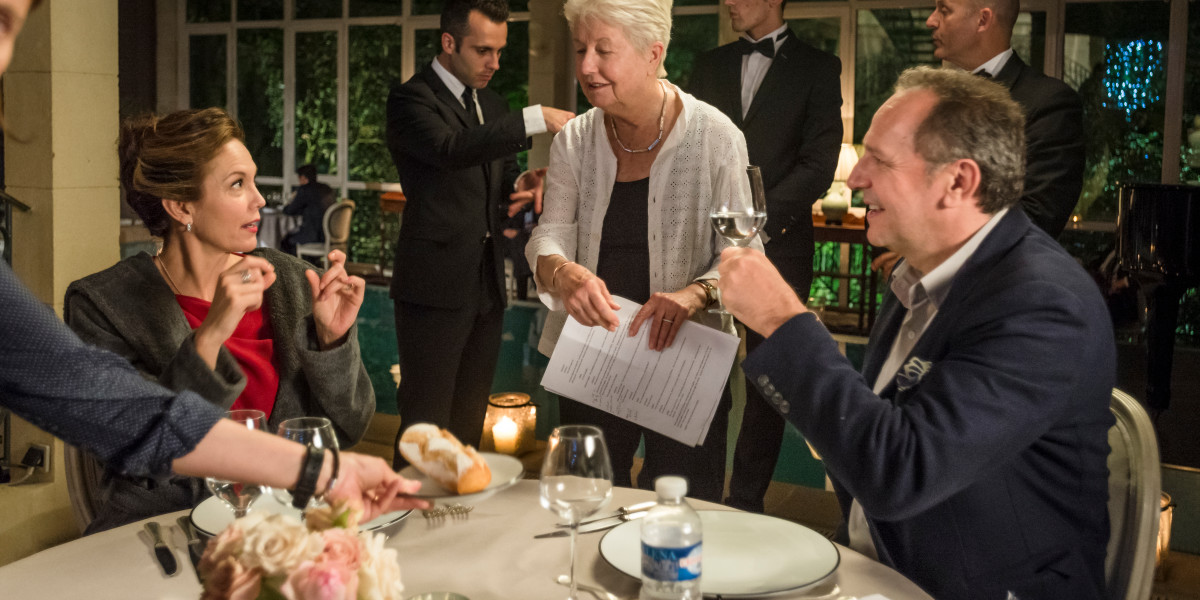
As for my own palate, I always taste wines
with food because it only makes sense to do so, as
opposed to sniffing and swirling and swallowing a
score of Chenin Blancs and struggling to say
anything worthwhile about them.
Let me be clear: I most certainly have found
hundreds of California, Washington and Oregon wines
to be superb, not least because they do taste
different in the best possible ways from their
European counterparts. There’s no reason a Sonoma
County Pinot Noir should approximate a Côte de Nuit
Burgundy, as long as it still tastes like Pinot
Noir. Different climate, different soils will
produce different wines, even within confined areas,
even just meters from another vineyard.
I
am also a big believer in drinking the wines of a
region where I’m eating, so when in Tuscany I order
Tuscan wines and when in Napa Valley I drink Napa
Valley wines. It’s absurd to do otherwise, as long
as you ferret out the best from a wine list,
preferably one without numerical ratings.
❖❖❖
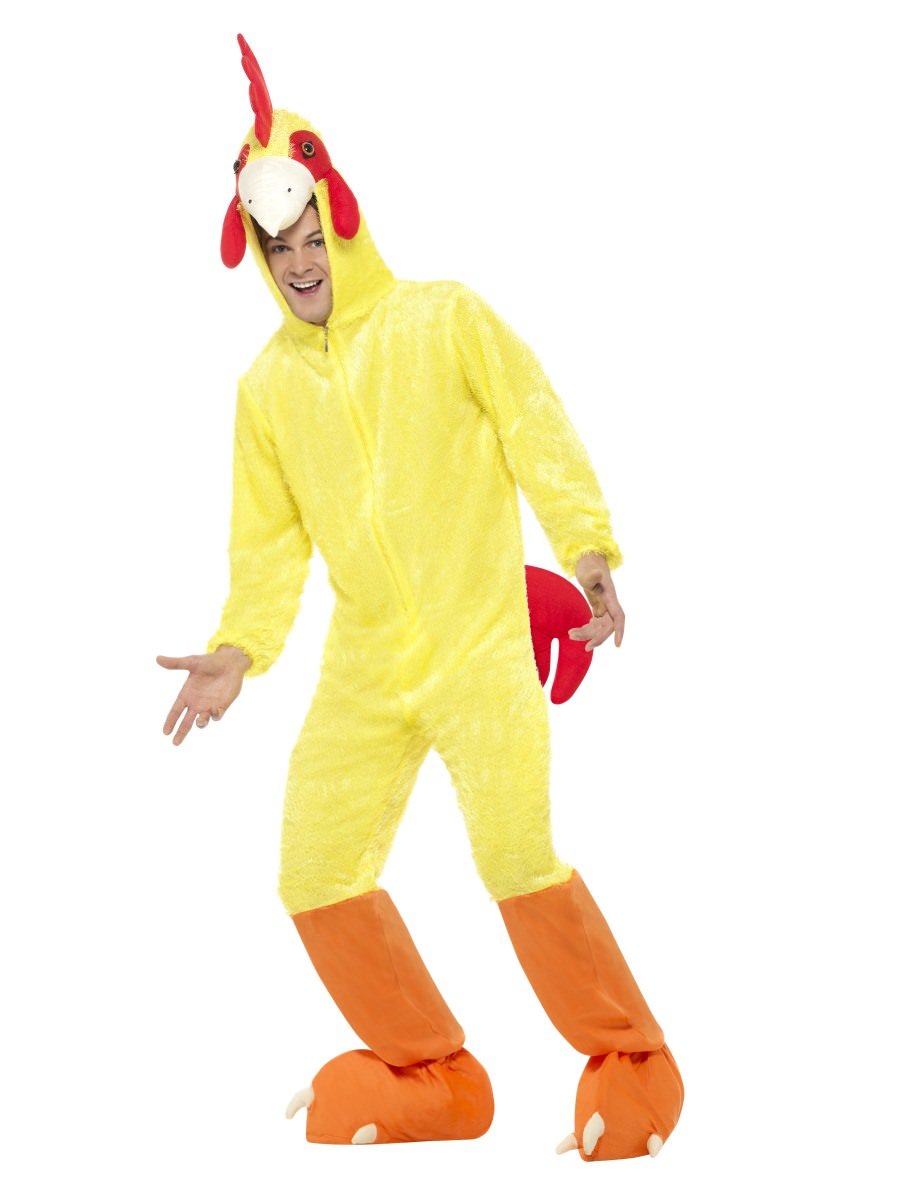
ARTICLES WE NEVER FINISHED READING
"Go
Ahead, Bring a Whole-Ass Roast Chicken to Your
Picnic"
By Jen Stevenson, Eater.com (5/31/22)
❖❖❖
Any of John Mariani's books below may be ordered from amazon.com.
 The Hound in Heaven
(21st Century Lion Books) is a novella, and
for anyone who loves dogs, Christmas, romance,
inspiration, even the supernatural, I hope you'll find
this to be a treasured favorite. The story
concerns how, after a New England teacher, his wife and
their two daughters adopt a stray puppy found in their
barn in northern Maine, their lives seem full of promise.
But when tragedy strikes, their wonderful dog Lazarus and
the spirit of Christmas are the only things that may bring
his master back from the edge of despair.
The Hound in Heaven
(21st Century Lion Books) is a novella, and
for anyone who loves dogs, Christmas, romance,
inspiration, even the supernatural, I hope you'll find
this to be a treasured favorite. The story
concerns how, after a New England teacher, his wife and
their two daughters adopt a stray puppy found in their
barn in northern Maine, their lives seem full of promise.
But when tragedy strikes, their wonderful dog Lazarus and
the spirit of Christmas are the only things that may bring
his master back from the edge of despair. WATCH THE VIDEO!
“What a huge surprise turn this story took! I was completely stunned! I truly enjoyed this book and its message.” – Actress Ali MacGraw
“He had me at Page One. The amount of heart, human insight, soul searching, and deft literary strength that John Mariani pours into this airtight novella is vertigo-inducing. Perhaps ‘wow’ would be the best comment.” – James Dalessandro, author of Bohemian Heart and 1906.
“John Mariani’s Hound in Heaven starts with a well-painted portrayal of an American family, along with the requisite dog. A surprise event flips the action of the novel and captures us for a voyage leading to a hopeful and heart-warming message. A page turning, one sitting read, it’s the perfect antidote for the winter and promotion of holiday celebration.” – Ann Pearlman, author of The Christmas Cookie Club and A Gift for my Sister.
“John Mariani’s concise, achingly beautiful novella pulls a literary rabbit out of a hat – a mash-up of the cosmic and the intimate, the tragic and the heart-warming – a Christmas tale for all ages, and all faiths. Read it to your children, read it to yourself… but read it. Early and often. Highly recommended.” – Jay Bonansinga, New York Times bestselling author of Pinkerton’s War, The Sinking of The Eastland, and The Walking Dead: The Road To Woodbury.
“Amazing things happen when you open your heart to an animal. The Hound in Heaven delivers a powerful story of healing that is forged in the spiritual relationship between a man and his best friend. The book brings a message of hope that can enrich our images of family, love, and loss.” – Dr. Barbara Royal, author of The Royal Treatment.
 |
The Encyclopedia of American Food and Drink by John F. Mariani (Bloomsbury USA, $35) Modesty forbids me to praise my own new book, but let me proudly say that it is an extensive revision of the 4th edition that appeared more than a decade ago, before locavores, molecular cuisine, modernist cuisine, the Food Network and so much more, now included. Word origins have been completely updated, as have per capita consumption and production stats. Most important, for the first time since publication in the 1980s, the book includes more than 100 biographies of Americans who have changed the way we cook, eat and drink -- from Fannie Farmer and Julia Child to Robert Mondavi and Thomas Keller. "This book is amazing! It has entries for everything from `abalone' to `zwieback,' plus more than 500 recipes for classic American dishes and drinks."--Devra First, The Boston Globe. "Much needed in any kitchen library."--Bon Appetit. |
"Eating Italian will never be the same after reading John Mariani's entertaining and savory gastronomical history of the cuisine of Italy and how it won over appetites worldwide. . . . This book is such a tasteful narrative that it will literally make you hungry for Italian food and arouse your appetite for gastronomical history."--Don Oldenburg, USA Today. "Italian
restaurants--some good, some glitzy--far
outnumber their French rivals. Many of
these establishments are zestfully described
in How Italian Food Conquered the World, an
entertaining and fact-filled chronicle by
food-and-wine correspondent John F.
Mariani."--Aram Bakshian Jr., Wall Street
Journal.
"Equal parts
history, sociology, gastronomy, and just
plain fun, How Italian Food Conquered the
World tells the captivating and delicious
story of the (let's face it) everybody's
favorite cuisine with clarity, verve and
more than one surprise."--Colman Andrews,
editorial director of The Daily
Meal.com. "A fantastic and fascinating
read, covering everything from the influence
of Venice's spice trade to the impact of
Italian immigrants in America and the
evolution of alta cucina. This book will
serve as a terrific resource to anyone
interested in the real story of Italian
food."--Mary Ann Esposito, host of PBS-TV's
Ciao
Italia. "John Mariani has written the
definitive history of how Italians won their
way into our hearts, minds, and
stomachs. It's a story of pleasure over
pomp and taste over technique."--Danny Meyer,
owner of NYC restaurants Union Square
Cafe, The Modern, and Maialino.
|
 |
 |
 |
 |
 |
 |
 Everett Potter's Travel Report:
Everett Potter's Travel Report: 
 Eating Las
Vegas
Eating Las
Vegas
MARIANI'S VIRTUAL GOURMET
NEWSLETTER is published weekly. Publisher: John Mariani. Editor: Walter Bagley. Contributing Writers: Christopher
Mariani, Misha Mariani, John A. Curtas, Gerry Dawes, Geoff Kalish.
Contributing
Photographer: Galina Dargery. Technical
Advisor: Gerry
McLoughlin.
If you wish to subscribe to this
newsletter, please click here: http://www.johnmariani.com/subscribe/index.html
© copyright John Mariani 2022

